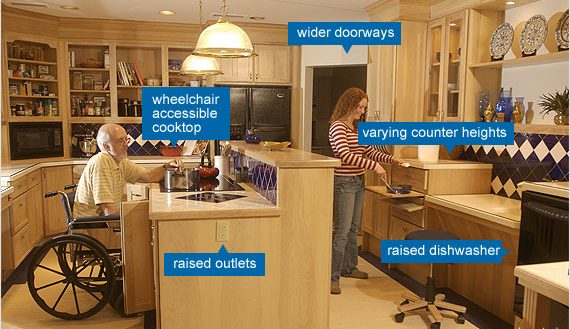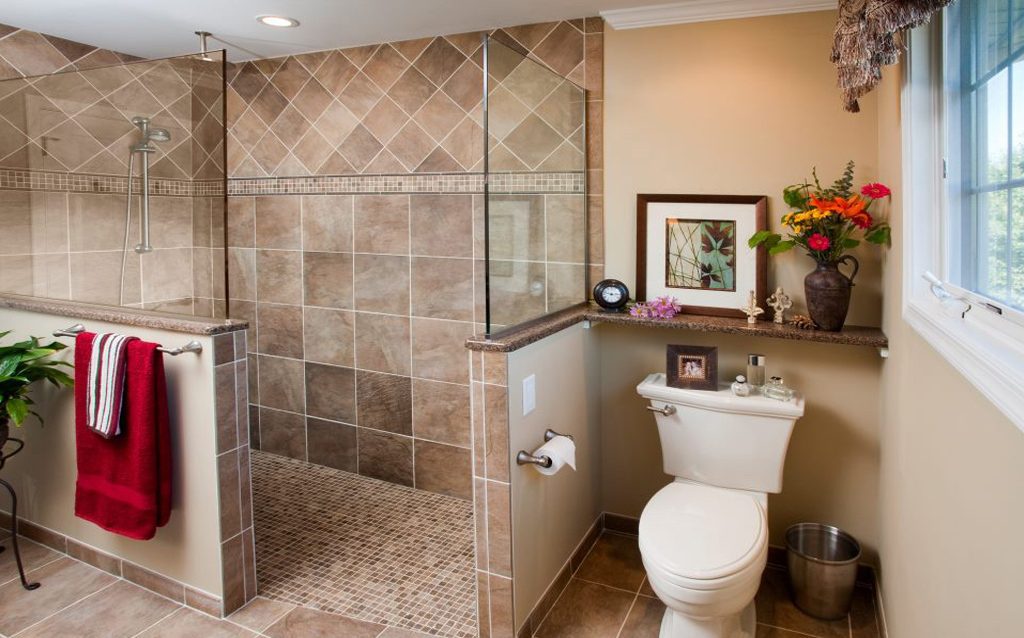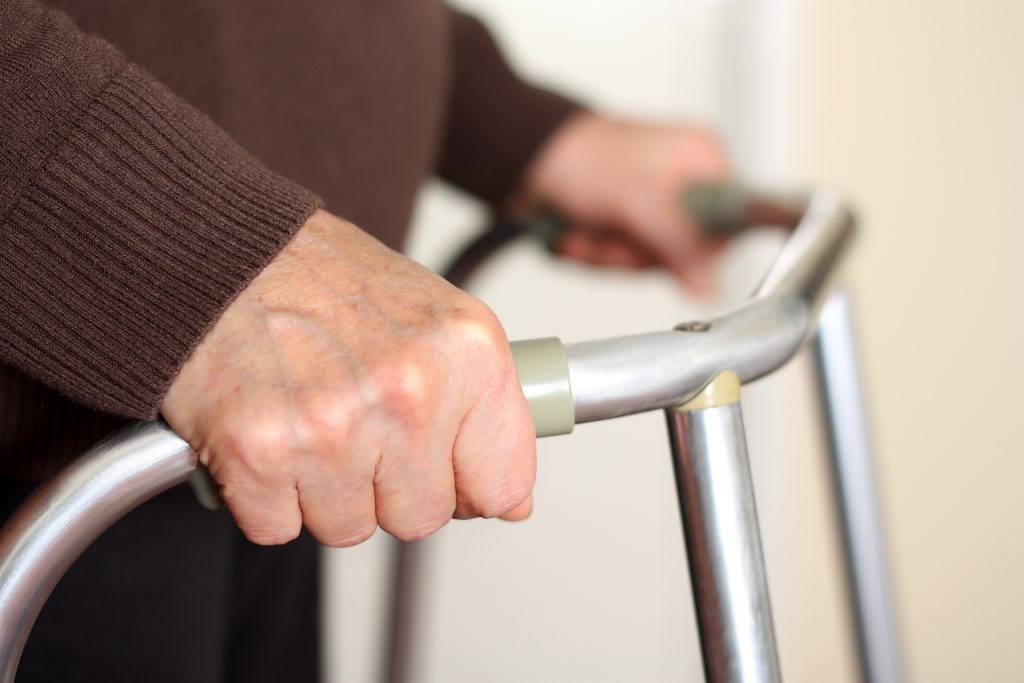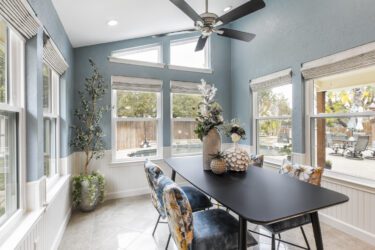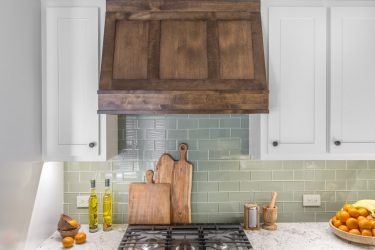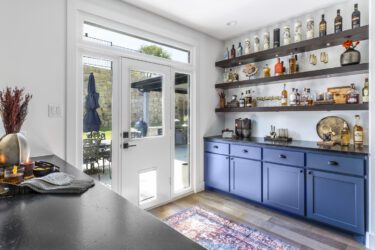Photo Source
Aging-in-place design, also called barrier-free or universal design, means making updates to an interior to create a safe and accessible environment for everyone, including those that are aging, may be disabled or need the assistance of a walker or wheelchair.
When we think of this kind of design, the first things that come to mind are ramps, grab bars, or chair lifts – features that might seem extreme, out of the ordinary, or specific to older or disable individuals. However, this isn’t always the case. In fact, many universal design features are not unusual requests among homeowners. Wider doors and hallways, for example, are common remodeling requests that make a home feel more spacious and can also benefit those that need universal or barrier-free designs.
There are many aging-in-place features that can be incorporated into your home remodeling project without interfering too much with the style or design of the finished project. These are great features to consider if you intend to live out the rest of your life in the same home, or if you expect to share your home with aging family members or parents later on. Even if it seems like a long time from now, it’s a good idea to prepare for the future instead of having to remodel your home a second time to meet your changing needs.
Here are a few aging-in-place features to consider including in your home remodeling project:
In the Kitchen
1. Choose large pulls instead of round knobs when selecting hardware for cabinets and drawers. These are much easier on arthritic hands.
2. Similarly, choose a faucet with large, flat handles instead of round ones that require a firm grip to turn off and on.
3. Install a contrasting edge-band on countertop for those whose eyesight may be failing.
4. Install varied-height cabinets and countertops that can be easily reached from a wheelchair.
5. Under-the-counter refrigerators and elevated dishwashers are great alternatives to accommodate people in wheelchairs as well as people who may not be able to bend easily.
6. Leaving an open space under the sink, cooktop, and prep counter will also provide for wheelchair accessibility.
7. Choose a range with controls at the front or to the side of the cooktop.
In the Bathroom
8. Just like in the kitchen, countertops with contrasting edge-banding are a great option for a vanity
9. Use anti-scald or pressure balancing valves for the tub / shower
10. Choose an easily adjustable showerhead
11. Offset shower and/or tub controls so they can easily be reached from outside the tub or shower
12. Install grab bars in the shower / tub
13. Install vanities of different heights if possible
14. Widen the doorway to at least 32 inches wide to accommodate a wheelchair
15. Install a curb-less shower pan
16. Choose a wall-hung sink with covered pipes
Photo Source
Throughout the House
17. Choose lever handles instead of round doorknobs
18. Widen walkways and doorways to at least 32 inches
19. Avoid changes in floor height if possible
20. Lower switches and raise receptacles so that they can be reached from a seated position.
While Universal Designs might not seem necessary right now, it’s definitely a good idea to consider it now and prepare for the future – especially if you are remodeling now and don’t plan on doing it again. Many of these features are not too aesthetically noticeable, but they will make a huge impact on the safety and accessibility for you and your loved ones as you age in place.
If you have questions, or would like to discuss what Universal Design features are good options for you, our designers would be happy to help! Contact Medford Remodeling for more information!
Warm Regards,
The Medford Remodeling Team


